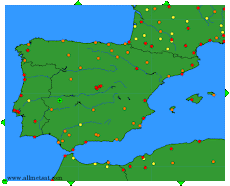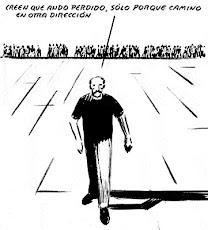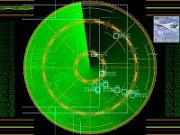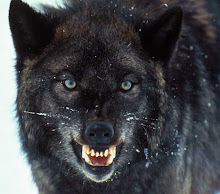viernes, 25 de mayo de 2012
COLISIONES CON AVES EN EL AEROPUERTO DE MADRID-BARAJAS
El Aeropuerto de Madrid-Barajas limita al oeste con la ciudad de Madrid, al este con el río Jarama, los cerros de Paracuellos y el espacio aéreo de Torrejón, al sur con las poblaciones Coslada y San Fernando, y al norte con los términos municipales de San Sebastián de los Reyes, Algete y Cobeña.
Los márgenes del río Jarama están densamente arboladas, y en ellas habita una variada avifauna. Para evitar incidentes con aves el Aeropuerto dispone Servicio de Control de Fauna, creado por Félix Rodríguez de la Fuente, y que desde hace 40 años controla Jesús Rero, con unos 38 halcones que se encargan de mantener libre el espacio aéreo del área de influencia aeroportuaria.
Cuando el aeropuerto opera en la llamada configuración norte, los aviones que salen atraviesan parajes naturales, como el Soto de Viñuelas a la altura de Fuente el Fresno y Ciudalcampo, la cuenca alta del Manzanares, el valle del Jarama a la altura de la urbanización Pradonorte y la Zepa de Algete, donde habitan, campean y transitan multitud de rapaces; entre ellas el buitre leonado, el buitre negro y el águila imperial. Antes de julio de 2005 los aviones atravesaban el Monte del Pardo, donde residen también estas emblemáticas especies. Desde la inauguración de la primera ampliación del aeropuerto, en noviembre de 1998, son frecuentes los incidentes cuando los aviones sobrevuelan estos espacios naturales.
En configuración sur, las aproximaciones se llevan a cabo por el pasillo que forman la carretera A-1 y el valle del Jarama, y no tenemos constancia de ninguna colisión. Además los despegues resultan más peligrosos porque los motores van a máxima potencia y el impacto de un pájaro puede causar mayores daños.
El pasado 13 de mayo el A340 Agustina de Aragón, vuelo Iberia 6533 MAD-SJU, con 151 pasajeros a bordo, chocó contra un buitre leonado cuando sobrevolaba Colmenar Viejo (Madrid) a una altura de 6.000 pies (unos 2.000 metros), que le dañó el cono de nariz y el sistema de radar. En las fotos se puede ver la pluma de la desdichada ave entre la junta del radome y el fuselaje a la altura del nombre del avión.
Si bien cualquier incidente en el Aeropuerto de Madrid-Barajas, por irrelevante que sea, puede acabar en catástrofe, en el caso de colisión con aves la situación está bien definida por OACI y se actúa con procedimientos operativos claros y concisos. Como bien informan desde el SEPLA en Aviación digital: “Los impactos de aviones con pájaros son algo habitual en el mundo de la aviación por lo que las aeronaves están certificados para afrontar estos incidentes en condiciones muy específicas". En este caso el ave impactó en la parte delantera y sólo causo daños estructurales, pero, por motivos de seguridad regresó al aeropuerto. En el caso de que el impacto se produzca contra un motor y éste se pare, el avión también tendrá que regresar usando los motores restantes, lo que en principio no supone ningún peligro, excepto en el Aeropuerto de Madrid-Barajas debido a su peculiar y peligrosa configuración operativa.
Este tipo de incidentes son inevitables si los aviones vuelan por zonas de cría, campeo o tránsito de avifauna, y la única solución es el cambio de las rutas a otras zonas más seguras o volar más alto.
Y casualmente, o no, a los dos días AENA publica una nota de prensa en la que informa de algunas de las actuaciones que llevan a cabo para prevenir este tipo de accidentes; por supuesto, y como es norma en esta empresa, sin referirse al accidente que tuvo lugar tres días antes.
Desde Las mentiras de Barajas aclaramos que en modo alguno lo que hace AENA son medidas preventivas, ya que éstas deberían llevarse a cabo, primero, después de la época de cría y cuando las aves abandonan el nido, allá por los meses de otoño, y, segundo, justo cuando las cigüeñas están formando los nidos para que desistan de su intención y se vayan a otro sitio. Si bien se trata de una tarea ardua por la cabezonería de las futuros papas y mamás cigüeñas. Por el contrario, AENA actúa tarde y causando un trastorno a los polluelos y progenitores con el traslado al Centro de Recuperación de Fauna CRAS Madrid-Viñuelas.
Completamos este artículo con la información disponible en SKYbrary sobre colisiones con aves. Incluimos el enlace desde el cual se puede acceder a todos los artículos y contenidos relacionados, la información más relevante del artículo principal y los enlaces de los artículos que consideramos más interesantes.
BIRD STRIKE
Source: www.skybrary.aero
Categories: Bird Strike | Operational Issues
Description
A bird strike is strictly defined as a collision between a bird and an aircraft which is in flight or on a take off or landing roll. The term is usually expanded to cover other wildlife strikes - with bats or ground animals.
Bird Strike is common and can be a significant threat to aircraft safety. For smaller aircraft, significant damage may be caused to the aircraft structure and all aircraft, especially jet-engined ones, are vulnerable to the loss of thrust which can follow the ingestion of birds into engine air intakes, which has caused a number of fatal accidents.
Bird strikes may occur during any phase of flight but are most likely during the take-off, initial climb, approach and landing phases because of the greater numbers of birds in flight at lower levels. Since most birds fly mainly during the day, most bird srikes occur in daylight hours too.
Effects
The nature of aircraft damage from bird strikes, which is significant enough to create a high risk to continued safe flight, differs according to the size of aircraft. Small propeller-driven aircraft are most likely to experience hazardous effects of strikes as structural damage, such as the penetration of flight deck windscreens and damage to control surfaces or the empennage. Larger jet-engined aircraft are most likely to experience hazardous effects of strikes as the consequences of engine ingestion. Partial or complete loss of control may be the secondary result of either small aircraft structural impact or large aircraft jet engine ingestion. Loss of flight instrument function can be caused by impact effects on the Pitot Static System air intakes which can cause dependent instrument readings to become erroneous.
Complete Engine failure or serious power loss, even on only one engine, may be critical during the take-off phase for aircraft which are not certificated to 'Performance A' standards. In the case of bird ingestion into more than one engine, all aircraft are vulnerable to loss of control. Such hazardous ingestion is infrequent but may result from the penetration of a large flock of medium sized birds or an encounter with a smaller number of very large ones.
In some cases, especially smaller fixed wing aircraft and helicopters, windscreen penetration may result in injury to pilots or other persons on board and has sometimes led to loss of control. (See the images at the foot of this article.)
Structural damage to a pressurised aircraft hull at higher altitudes can lead to rapid depressurisation, although higher altitude bird strikes are relatively rare. A more likely cause of difficulty is impact damage to extended landing gear assemblies in flight, which can lead to sufficient malfunction of brakes or nose gear steering systems to cause directional control problems during a subsequent landing roll. A relatively common but avoidable significant consequence from a bird strike on the take off roll is a rejected take off decision which is either made after V1 or which is followed by a delayed or incomplete response and which leads to a runway excursion off the departure end of the runway.
Defences
The primary defence against hazardous bird strikes comes from the requirements for continued safe flight after strikes which are included in the airworthiness requirements of the Aircraft Type and Aircraft Engine Type Certification processes. However, these requirements are not a complete protection and are also mainly focussed on large fixed wing transport aircraft. The relevant design requirements for smaller fixed wing aircraft and helicopters are very limited. The article on Aircraft Certification for Bird Strike Risk goes into more detail.
The opportunities to mitigate the risk of hazardous bird strikes in the first place are centred on airports, because this is where the greatest overall volume of conflict occurs, and because this is where management and control of the hazard is most easily achieved. However, there are two problems with the this approach:
1.The airport-centred bird strike risk is rarely confined to the perimeter of any particular airport
2.Many of the most hazardous strike encounters - those with large flocking birds - take place so far from the airport that the airport operating authority will often have little real influence over the circumstances.
The basis for managing bird strike hazard at and around airports is considered in more detail in the article on Airport Bird Hazard Management
Establishing and monitoring levels of bird activity is important and an important part of this is the recording of bird strikes at local level and the opportunity this then gives to build up larger databases and share the information.
Guidance on effective measures for establishing whether or not birds, on or near an aerodrome, constitute a potential hazard to aircraft operations, and on methods for discouraging their presence, is given in the ICAO Airport Services Manual, Part 3 and in more detail in a number of State-published documents which will be useful beyond their jurisdictions and are referred to under Further Reading in the above-mentioned article on Airport Bird Hazard Management.
Tactical defences against hazardous bird strikes for those who operate and fly transport aircraft are reviewed in the article Operators Checklist for Bird Strike Hazard Management
Typical Scenarios
1.Bird ingestion to three out of four engines of a departing jet transport occurs at 200 feet agl after take off has been made despite ATC advice of the presence of large birds and an offer to have them dispersed. As a result, one engine is disabled completely and two others are sufficiently damaged to the extent of only producing reduced thrust. An emergency return to land is made.
2.A flock of medium-sized birds is struck by a jet transport just after V1 but before Vr with a rejected take off response despite take off performance being limiting due to aircraft weight. As a result, an overrun occurs with substantial aircraft damage.
3.A twin-engined light aircraft flies into a single heron at 200 feet agl after take off and it breaks through the windscreen and hits the pilot who temporarily loses control so that upon recovery, a forced landing ahead is the only option
4.Wing root damage to a single-engined light aircraft caused by a vulture-strike during climb out causes structural damage to such an extent that control is lost and terrain impact results.
Contributory Factors
Habitat features including open areas of grass and water as well as shrubs and trees provide food and roosting sites for birds. Even transient water accumulation on uneven pavements can be a significant bird attractant
Landfill and other waste disposal sites close to an airport often attract large numbers of birds if they are not carefully managed.
Some types of agricultural activity on or in the vicinity of an airport may attract birds.
Migrating birds often follow well-defined flight paths in considerable numbers which can create a hazard if they pass near an airport.
Airports in coastal locations often have a much higher level of un-managed bird activity than inland airports.
Most airports contain considerable areas of grass within their perimeters; since even dry grass can be attractive as a loitering area for birds by day or night, appropriate grass management policies, especially the grass height maintained, can be very important.
Solutions
Habitat management, including reduction or elimination of trees, shrubs and other plants which provide food, shelter or roosting sites for birds.
Netting or draining of streams, routinely wet grassland and areas of standing water. Prevention of transient formation of such areas after heavy rainfall.
Aerodrome grass management appropriate to the prevalent species and the degree of risk that they pose.
Liaison with local authorities to ensure that landfill waste disposal sites are not operated so as to create an aircraft hazard.
Liaison with local farmers to limit the attraction of birds to fields.
Use of bird scaring techniques such as: Broadcast of bird distress signals; Firing of pyrotechnic bird scaring cartridges.
Tactical detection of large flocking birds using specialised ground-based radar equipment
Artículos relacionados más interesantes:
Airport Bird Hazard Management
Bird Strike: Guidance for Controllers
Accident and Serious Incident Reports: BS
Suscribirse a:
Comentarios (Atom)



















